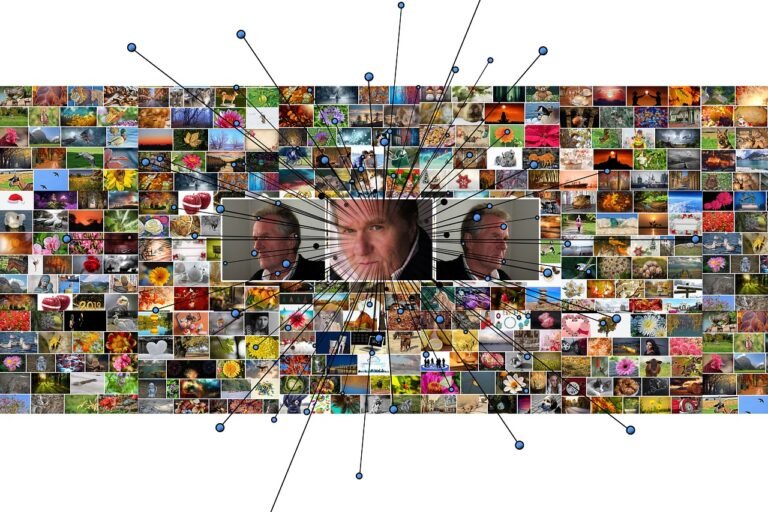What is deep learning?
Deep learning is a branch of machine learning and artificial intelligence (AI) that models how people gather particular kinds of knowledge. Deep learning is a major element of data science, including statistics and predictive modeling. Deep learning makes this procedure quicker and easier, which is highly helpful for data scientists tasked with collecting, analyzing, and interpreting vast amounts of data.
Deep learning can be viewed as a means to automate predictive analytics at its most basic level. Deep learning algorithms are piled in a hierarchy of increasing complexity and abstraction, unlike conventional machine learning algorithms, which are linear.
Imagine a young infant whose first word is “dog” to understand deep learning. The toddler learns what a dog is and is not by pointing at various objects and using the word “dog.” The parent replies, “Yes, that is a dog,” or “No, that is not a dog.” As he keeps pointing to numerous things, the little child learns more about all dogs’ traits. The youngster unwittingly simplifies a challenging abstraction—the concept of a dog—by building a hierarchy in which each level of abstraction is built using the knowledge that was learned from the preceding layer of the hierarchy.

how does deep learning work?
Deep learning computer algorithms go through stages akin to how a child learns to recognize a dog. Each algorithm in the hierarchy applies a nonlinear modification to its input and then uses what it has learned to produce a statistical model as its output. Until the result is accurate enough to accept, iterations continue. The number of processing layers data must pass through is called “deep” processing.
The learning process in typical machine learning is supervised. The programmer must be very explicit when instructing the computer what kinds of things it should look for to determine whether or not an image contains a dog. The computer’s success rate in this painstaking procedure, known as feature extraction, entirely hinges on the programmer’s ability to define a feature set for dogs precisely. Deep learning has the advantage that the software develops the feature set independently and without supervision. In addition to being quicker, unsupervised learning is typically more accurate.
The computer software may initially be given training data, such as a collection of photographs for which each image has been tagged with metatags to indicate whether it is a dog image or not. The computer develops a feature set for the dog and a predictive model using the information it learns from the training data. In this scenario, the computer’s initial model might suggest that anything in the image with four legs and a tail should be classified as a dog. Of course, neither the labels “four legs” nor “tail” are known to the software. It will merely scan the digital data for pixel patterns. The predictive model improves in complexity and accuracy with each iteration.
The computer software that employs deep learning algorithms can filter through millions of photographs after being shown a training set, precisely detecting which images have dogs in them in a matter of minutes. In contrast, a child will need weeks or even months to acquire the notion of a dog.
Deep learning systems need access to enormous amounts of training data and processing power to attain acceptable accuracy. Until the age of big data and cloud computing, neither of these resources was readily available to programmers. Deep learning programming can produce precise predictive models from enormous amounts of unlabeled, unstructured data because it can produce complicated statistical models directly from its own iterative output. This is crucial as the internet of things (IoT) spreads further because most data generated by people and devices is unstructured and unlabeled.
Deep learning methods
Strong deep-learning models can be produced using a variety of techniques. These methods include dropout, learning rate decay, transfer learning, and starting from scratch.
Learning rate decay: A hyperparameter, the learning rate, controls how much the model changes in response to the projected error each time the model weights are adjusted. A hyperparameter is a component that, prior to the learning process, defines the system or provides the requirements for its operation. Excessive learning rates could lead to learning a suboptimal set of weights or unstable training processes. Too-slow learning rates might lead to a drawn-out training process with the potential for becoming stuck.
The learning rate decay method, often referred to as learning rate annealing or adaptable learning rates is a way of modifying the learning rate to enhance performance and reduce training time. One of the easiest and most common ways to modify the learning rate during training is to slow it down over time.
Transfer learning: This method requires access to a network’s internal workings and involves improving a previously trained model. Users first input new data, including classifications that were not previously known, to the network that already exists. Once the network has been altered, new tasks can be completed with improved classification abilities. This method has the advantage of using much less data than others, which reduces computation time to a few minutes or hours.
Training from scratch: A sizable labeled data set must be acquired for this method to operate, and a network architecture that can learn the features and model must be built up. This tactic can be quite advantageous for new applications and apps with many output categories. However, it is frequently a less popular strategy because it needs a lot of data and takes days or weeks to train.
Dropout: By randomly eliminating units and their connections during training, this method addresses the problem of overfitting in neural networks with many parameters. It has been shown that the dropout method improves the performance of neural networks on supervised learning tasks in areas such as speech recognition, document classification, and computational biology.
Deep learning VS Machine learning
Deep learning, a subset of machine learning, sets itself apart by how it handles problems. A domain expert is required to discover the most popular features in machine learning. Conversely, deep learning doesn’t require domain knowledge because it gradually understands features. Deep learning algorithms must therefore be trained over a longer period of time than machine learning algorithms, which can be done in a few minutes to a few hours. When testing, however, the situation is different. Deep learning methods conduct tests substantially faster than machine learning algorithms, which take longer to run tests as the size of the data grows.
Additionally, unlike deep learning, machine learning does not require the same expensive, high-end hardware or powerful GPUs.
In the end, many data scientists prefer regular machine learning to deep learning due to its superior interpretability—the ability to grasp the results. Machine learning techniques are also used when there is little data.
You can also view and read our other article related to data science, big data, and their implementation here:

